How to Get Rid of Mice - Eliminate Relentless Rodents From Your Home - Popular Mechanics
There are plenty more ways beyond the traditional mousetrap to get rid of mice infesting your house. Popular Mechanics surveys the best ways homeowners and exterminators can solve a mouse problem.
First, the Mouse
It's a pest that has been invading human living spaces ever since we holed up in caves. The hardy creatures require little food and virtually no water, allowing them to thrive in modern buildings, behind our walls, and under our floors.
➡ Join Pop Mech Pro to get exclusive answers to your burning DIY questions.
Although cute and squeaky in the wild, mice are a dangerous nuisance in the home. The critters chew up insulation and gnaw through electrical wiring, creating a fire hazard. Mice can contaminate food with their feces. They carry fleas and diseases. Many people are allergic to the animal's urine. To top it off, the rodents breed prolifically; in several weeks a few mice can become a dozen.
Mouse intrusions happen year-round but tend to spike in many parts of the country in the summer months and late fall, Ralph H. Maestre, technical director at Magic Exterminating based in Flushing, New York, tells Popular Mechanics. Exterminators have developed a full arsenal of methods to kill, capture, and control the millions of rodents, mostly mice, who aim to set up shop in our homes and businesses, from the simple and iconic mousetrap to far more elaborate attacks. Here's a look at the weapons of mouse destruction.
Kill Zones: Front-line Traps
The traditional way to fight mouse infestation is with traps. Inquisitive mice can't help but check them out, especially if there's bait. "Mice are very curious about the new things in their environment," Jim Fredericks, chief entomologist & vice president of technical and regulatory affairs for the National Pest Management Association, tells Popular Mechanics.
Traps come in three basic varieties. First, classic snap traps, whose invention dates back to 1894. "To this day, the original old-fashioned snap trap is one of the most effective traps we have," Fredericks says. While going for the bait in these traps, the mouse steps on a trip and, SNAP!, a spring-loaded bar slams down with backbreaking force.
A second class, glue or sticky traps, uses strong adhesives to ensnare mice. (However, glue traps have raised the hackles of some animal-rights proponents, as stuck mice will sometimes chew through their limbs or rip themselves apart trying to break free.)
A third and less gruesome option for getting rid of mice is multiple-catch or live traps. Through mechanical means-spring-loaded doors, flippers, teeter-totter-like levers capture several mice in a storage area. The spared vermin can then be deposited far from the dwelling to keep them from coming back.
As for the choice of bait, skip the traditional cheddar cheese and try chocolate, peanut butter, or bacon.
Mousetraps 2.0: Unconventional Killing Machines
"Building a better mousetrap" isn't just an adage. Exterminator pros are always trying to come up with better ways to get rid of mice and rodents.
The Rat Zapper by AgriZap uses ordinary food bait to lure a mouse or rat, just like a traditional mousetrap does. But then the device zaps the rodent, courtesy of four D batteries. Victor makes various electronic mouse traps as well, including one that can catch 10 mice.
Another alternative trap is the NOOSKI, made in New Zealand. As a mouse enters the trap, it must stick its head through a rubber ring-which instantly contracts and suffocates the little bugger.
Perhaps the most advanced mousetrap around is the RADAR (Rodent Activated Detection And Riddance) device by U.K. company Rentokil Pest Control, geared for commercial use. When a mouse scampers into RADAR's tunnel and crosses two consecutive infrared beams, the trap seals shut and floods the chamber with a deadly dose of carbon dioxide. As a courtesy, RADAR notifies its owner via text message when the deed is done.
Poisons: Gobbling Down Some Sweet Death
If traps don't take care of your mouse problem, maybe it's time to switch to chemicals. Poisonous baits sold in pellet form, or in newer putty formulations, turn the natural tendency of mice to gnaw and nibble against them.
So-called rodenticides come in a number of varieties, but the most common are anticoagulants. These compounds cause internal hemorrhaging, ending a mouse's life in a few days. If you choose this route to kill mice, however, keep a supply of vitamin K1 around: It's an antidote to the anticoagulants that you can give to cats and dogs if they eat the poison, Fredericks says.
Other creative chemistries for dispatching mice include metal phosphide-laced baits, he says. When zinc phosphide reacts with the acid in a rodent's stomach, highly toxic phosphine gas forms. Vitamin D is another killing agent. The vitamin makes mice absorb too much calcium from their food, while leaching the mineral from their bones. The resulting hypercalcemia (excessive levels of calcium in the blood) damages the heart, kidneys and other organs.
Fredericks points out that all pesticides, including rodenticides, must be approved by the EPA and are regulated by state agencies. In other words, custom cocktails are not available. "Pros definitely don't make their own secret recipe," he says.
Tracking Tech: Seek and Destroy
Mice are frustratingly elusive, nibbling on food left out at night and vanishing during the day. But, unbeknownst to the rodents, they leave signs that reveal their movements. Those signs just happen to be in UV. Mouse urine fluoresces in UV light, so shining a black light around can show where the rodents pee. "The use of black lights is really a great inspection tool," Fredericks says, though it takes a trained eye to discern genuinely glowing mouse urine from splashes of, say, floor-scrubbing detergent.
🐭 Our Favorite Mousetraps
Simply leaving traps wherever you find mouse droppings might not be the best approach, though, Douglas Stern, managing partner at New Jersey-based Stern Environmental Group tells Popular Mechanics. His company developed a fluorescent powder that could help you track mice back to their nests. "When the mice walk on the powder, they get it on their feet and it leaves a footprint," Stern says. To get the powder onto the mice, load it into a box with food or dust it onto cotton balls, which the mice nab as nesting material. Then follow the footprints, which appear under UV, to find where the mice have set up shop. This lets you set up traps there, or seal off an outside entry point if mice are entering into the house from outdoors.
The so-called Track & Trap system has yet to become widespread, but Stern envisions the product having key niche applications. "I think it's going to be very popular in instances where you have mice running around and no one knows where they're coming from," he says. Meanwhile, major manufacturer Bell Labs has also started selling rodenticide food pellets doped with chemicals to
Fight Animals With Animals
Release the hounds! Exterminators today are taking a cue from law enforcement and turning to dogs' supersensitive noses for smelling bed bugs, ants, and termites. Dogs are just beginning to enter the field of mouse control, Fredericks says, but canines could potentially sniff out rodent headquarters.
Cats, of course, are the traditional nemesis of mice. "I think there's probably a lot of farmers that would swear their barn cats keep the mice out," Fredericks says. But the idea of a house cat attacking your mouse problem is probably more cartoon fodder than reality. A standard domesticated cat that lives in a house is probably not really hungry enough to be interested in killing mice," he says.
Finally, for those homeowners who aren't like Indiana Jones, snakes are always a fine predatory option. Case in point: Corn snakes, a popular, nonvenomous pet which winds around prey constrictor-style, love dining on mice.
Ultimately, there's no guarantee that a barrage of traps, poisons or high-tech repellents will solve a mouse problem, especially if mice find your home to be a sanctuary. The best approach, then, is one of the simplest: Make your home inhospitable to rodents. Keep in mind, mice are pretty much like us, needing a place to live with food and water. Eliminate those resources by keeping the house clean and sealed off, and store food in secure containers.
Repellants and Fortifications: Defense is the Best Offense
Preventing rodents from infiltrating the home in the first place has become big business. A number of rodent-repelling odorants are sold at hardware and home stores, including Critter Out spray, Fresh Cab Scent Pouches and Shake Away Rodent Repellant Granules that claim to smell like predators, banking on fear to keep mice away. Some people swear by strong scents, such as pine or cayenne peppers, or even dryer sheets. But experts say the effectiveness is questionable.
On the high-tech side, several companies offer ultrasonic repellers that supposedly keep mice at bay with sound waves. These devices send out sound waves above 20 kilohertz, the typical human high-end threshold for hearing, and some modulate between 32 and 64 kHz so undesirable animals cannot adapt. But some experts are still skeptical.
Simply shoring up a home might be the best way to thwart rodent intruders. Do a residence self-inspection by checking the foundation for holes, and spaces under doors. Seal up those holes with caulk, weatherstripping, or steel wool, which mice can't chew through. Follow up with regular patrols of your property.
Watch This:
This content is created and maintained by a third party, and imported onto this page to help users provide their email addresses. You may be able to find more information about this and similar content at piano.io

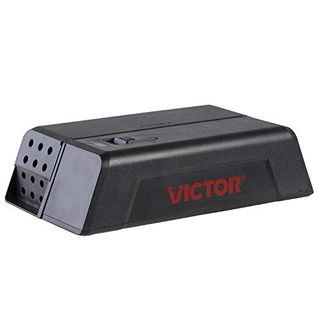


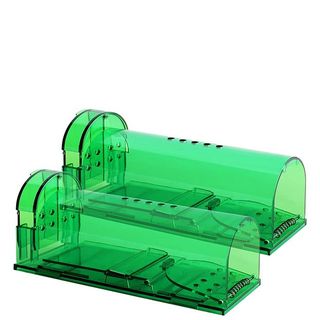

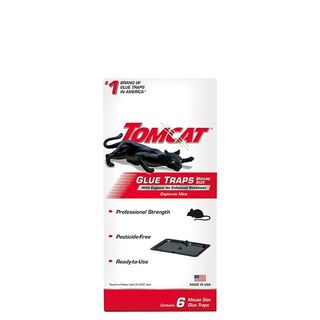
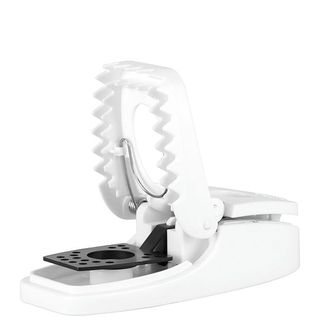

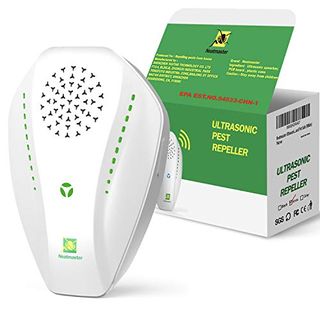
Comments
Post a Comment